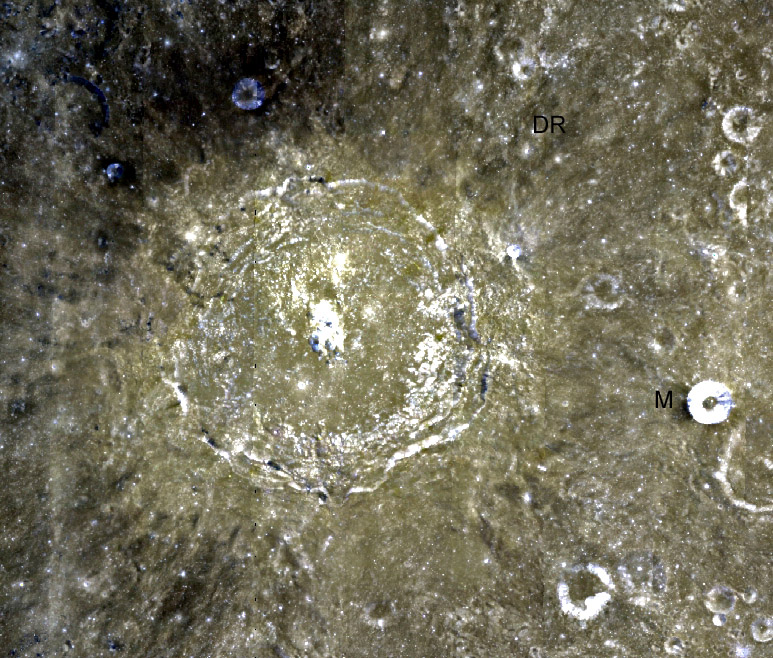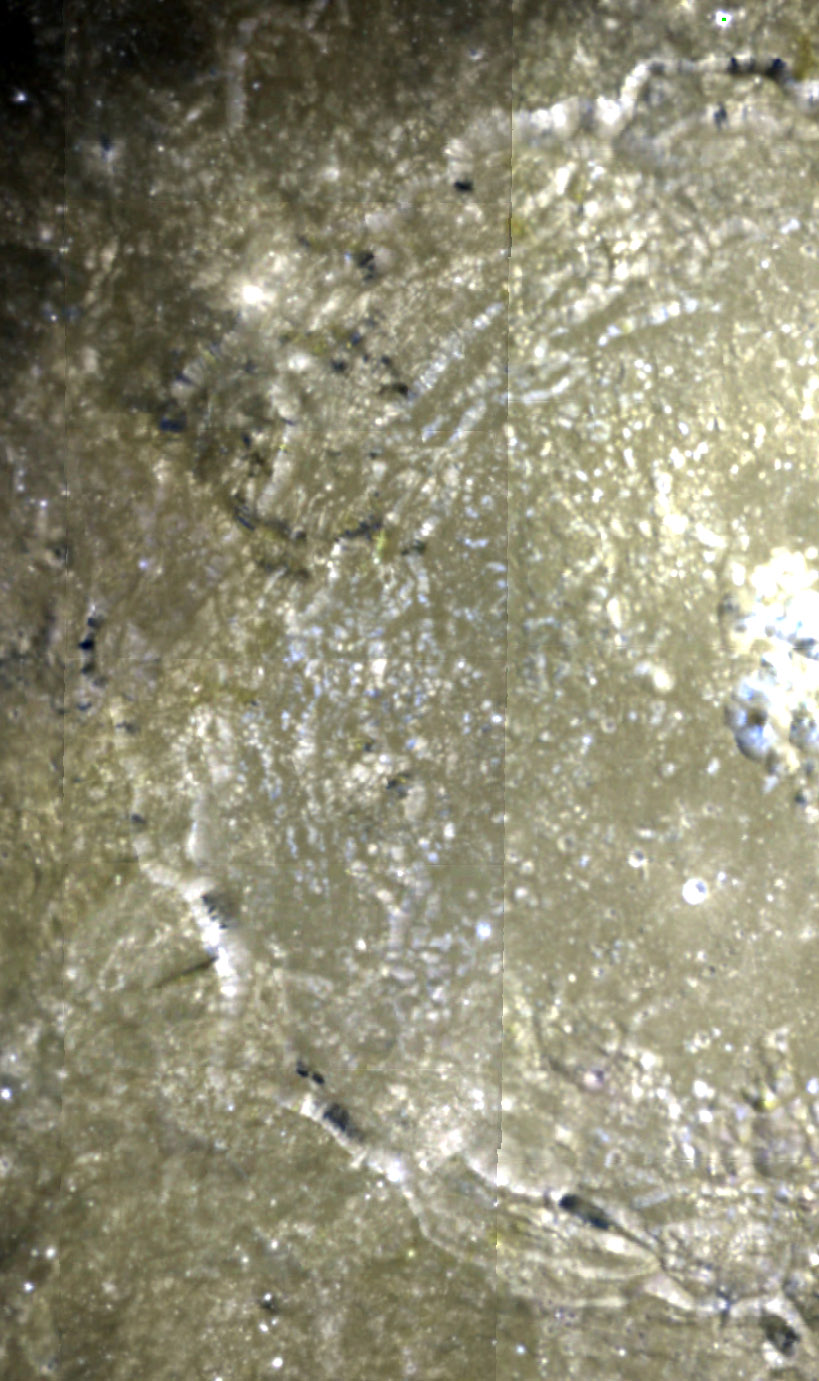Difference between revisions of "January 14, 2018"
(Created page with "__NOTOC__ =Dark Rays, Dark Streaks= Originally published July 22, 2008 <!-- Start of content --> <!-- ws:start:WikiTextHeadingRule:1:<h1> --> <!-- ws:start:WikiText...") |
|||
| Line 7: | Line 7: | ||
<em> image from Clementine, using USGS [http://www.mapaplanet.org/ Map-A-Planet]</em><br /> | <em> image from Clementine, using USGS [http://www.mapaplanet.org/ Map-A-Planet]</em><br /> | ||
<br /> | <br /> | ||
| − | [[July_21,_2008|Langrenus M]] excavated some dark material, presumably buried mare lavas. Now look westward at [ | + | [[July_21,_2008|Langrenus M]] excavated some dark material, presumably buried mare lavas. Now look westward at [https://the-moon.us/wiki/Langrenus Langrenus], where the same thing apparently happened. The broad view above shows an image made with [http://www.mapaplanet.org/explorer/help/data_set.html#moon_clementine_ratio ratios] of the Clementine ultraviolet and visible wavelength images. These ratio images seem to bring out the dark material best. Langrenus M is to the east (right) with its faint dark rays radiating to the west. More diffuse dark rays appear northeast of Langrenus (on either side of the DR letters) and on the opposite side of the crater - are these real? I think so. The uppermost rim of Langrenus is even more interesting - notice the small dark spots? An enlargement (below) reveals that these are small landslides of dark material that start from a fairly consistent distance below the rim crest. Most are V-shaped with the apex uphill at the dark material source. The most complex pattern of dark material defines a rough circle on the northwestern rim - I don't what would explain that. There are very few dark streaks on the eastern rim of Langrenus - and I can explain that. Langrenus impacted right on a boundary between Mare Fecunditatis and the messy highlands to the east. The dark streaks are almost all on the side that excavated mare material! Langrenus is a special variant of, and especially big, dark halo crater.<br /> |
<br /> | <br /> | ||
<em>[mailto:tychocrater@yahoo.com Chuck Wood]</em><br /> | <em>[mailto:tychocrater@yahoo.com Chuck Wood]</em><br /> | ||
Latest revision as of 18:17, 18 August 2018
Dark Rays, Dark Streaks
Originally published July 22, 2008

image from Clementine, using USGS Map-A-Planet
Langrenus M excavated some dark material, presumably buried mare lavas. Now look westward at Langrenus, where the same thing apparently happened. The broad view above shows an image made with ratios of the Clementine ultraviolet and visible wavelength images. These ratio images seem to bring out the dark material best. Langrenus M is to the east (right) with its faint dark rays radiating to the west. More diffuse dark rays appear northeast of Langrenus (on either side of the DR letters) and on the opposite side of the crater - are these real? I think so. The uppermost rim of Langrenus is even more interesting - notice the small dark spots? An enlargement (below) reveals that these are small landslides of dark material that start from a fairly consistent distance below the rim crest. Most are V-shaped with the apex uphill at the dark material source. The most complex pattern of dark material defines a rough circle on the northwestern rim - I don't what would explain that. There are very few dark streaks on the eastern rim of Langrenus - and I can explain that. Langrenus impacted right on a boundary between Mare Fecunditatis and the messy highlands to the east. The dark streaks are almost all on the side that excavated mare material! Langrenus is a special variant of, and especially big, dark halo crater.
Chuck Wood

Related Links
Rükl plate 49
Yesterday's LPOD: Bands
Tomorrow's LPOD: Straight Talk
COMMENTS?
Register, Log in, and join in the comments.



